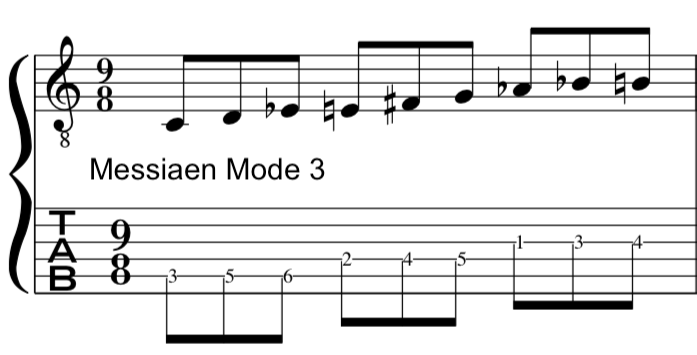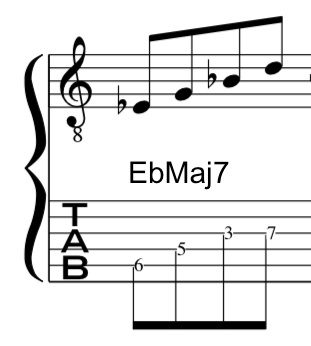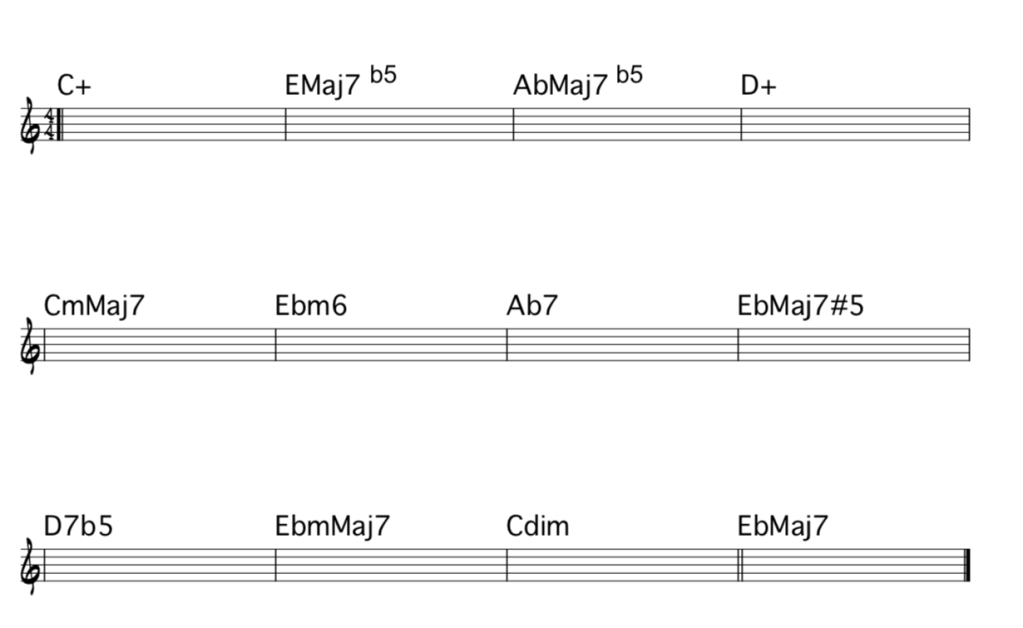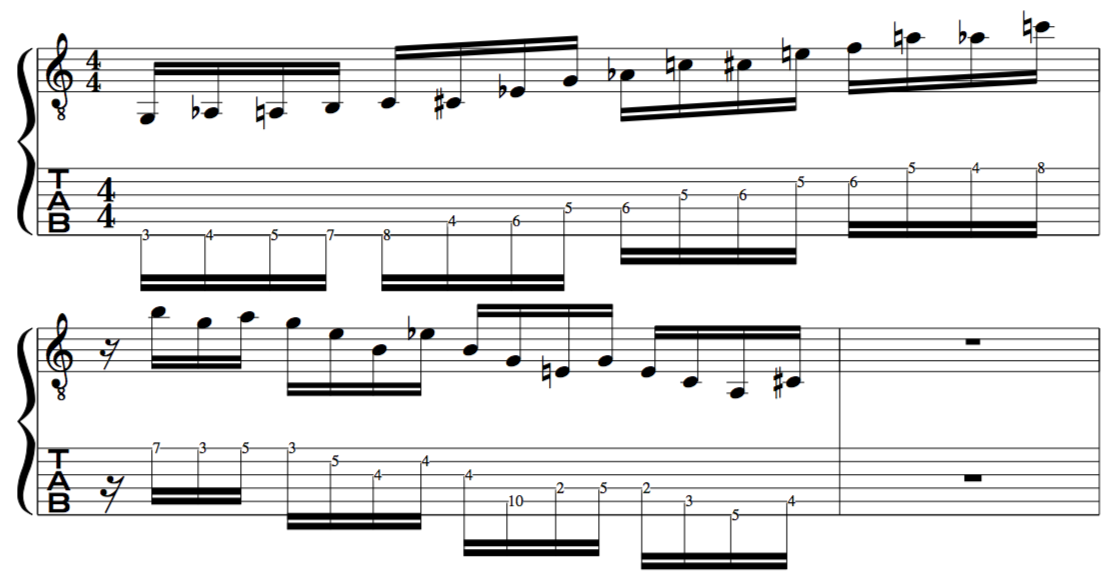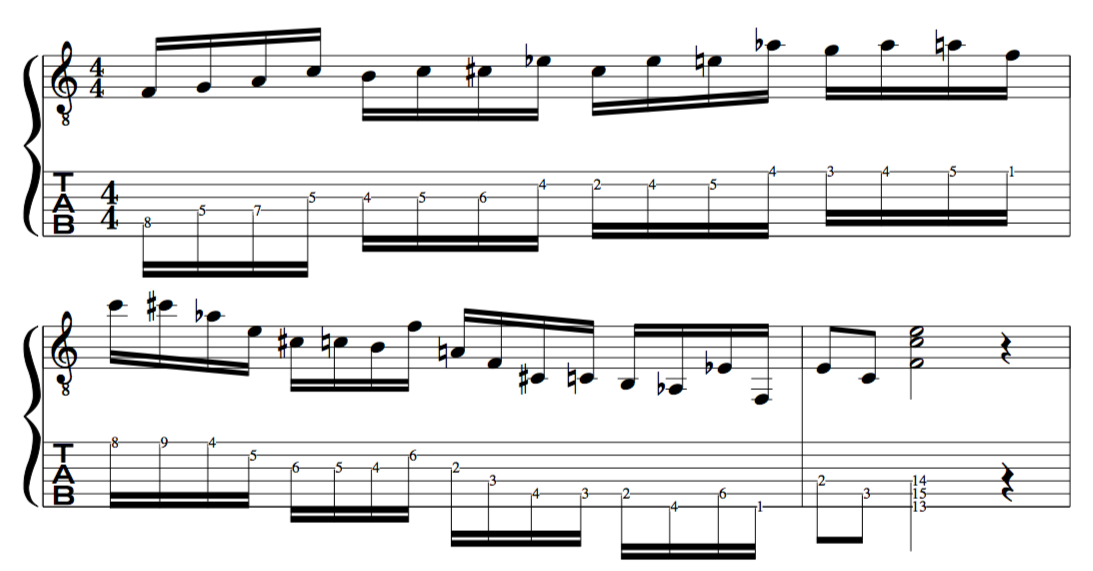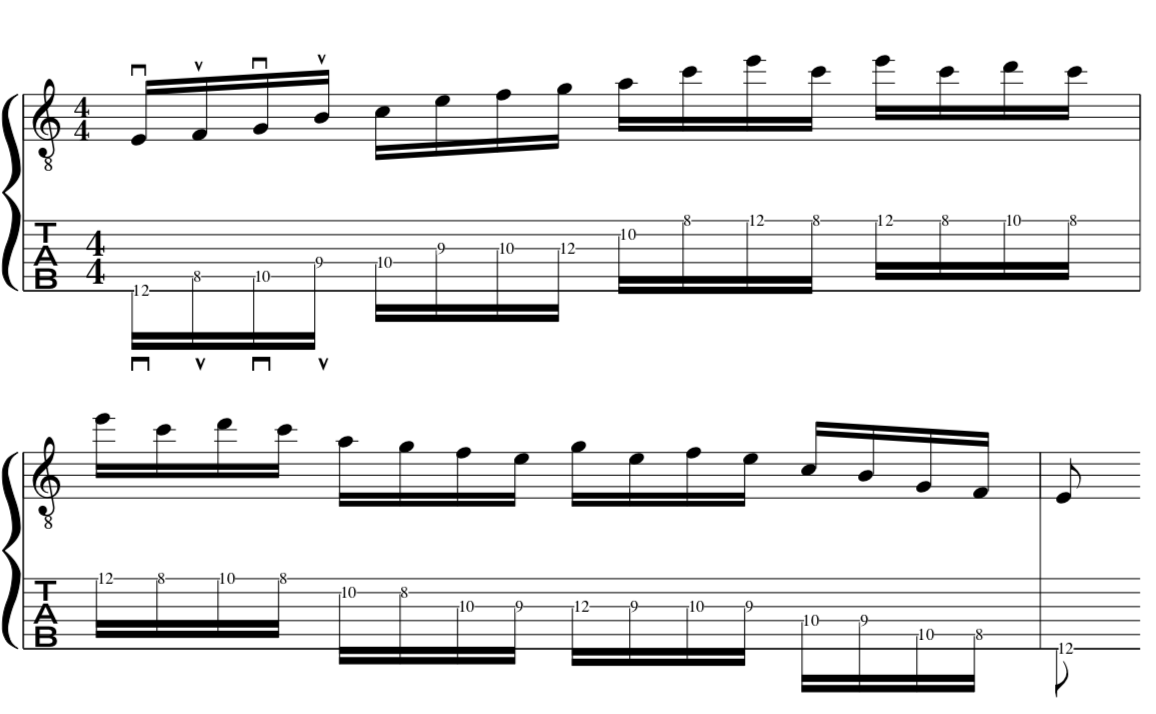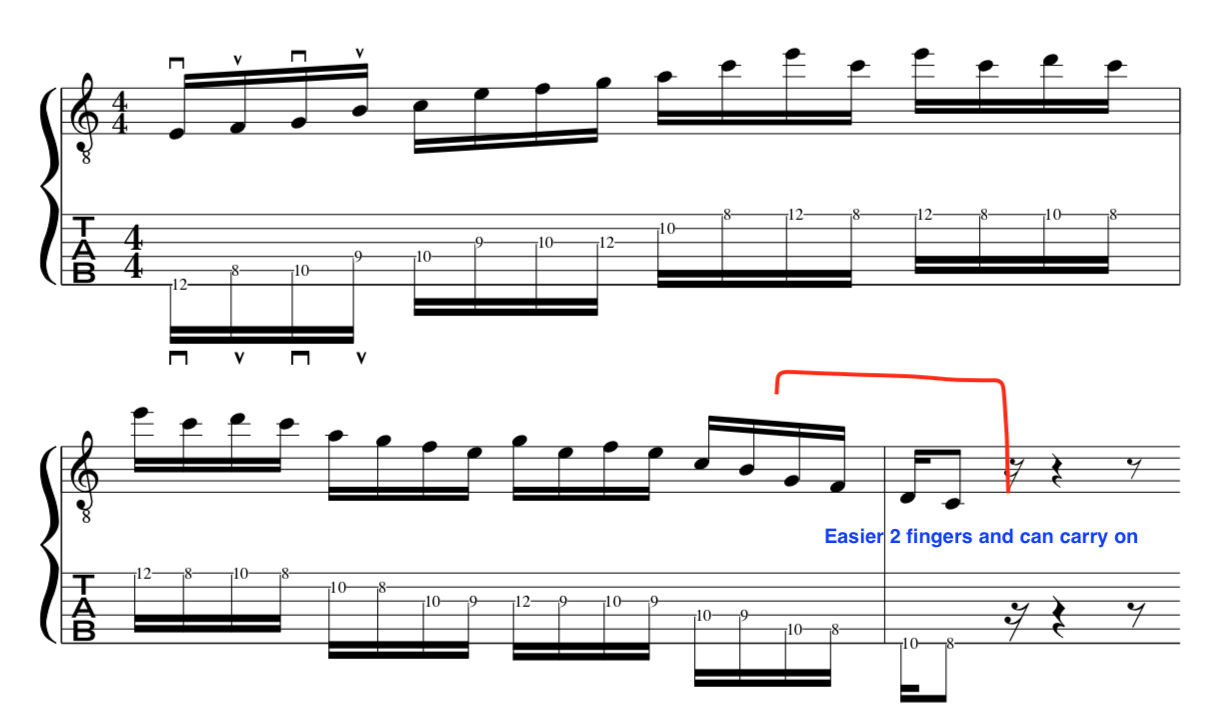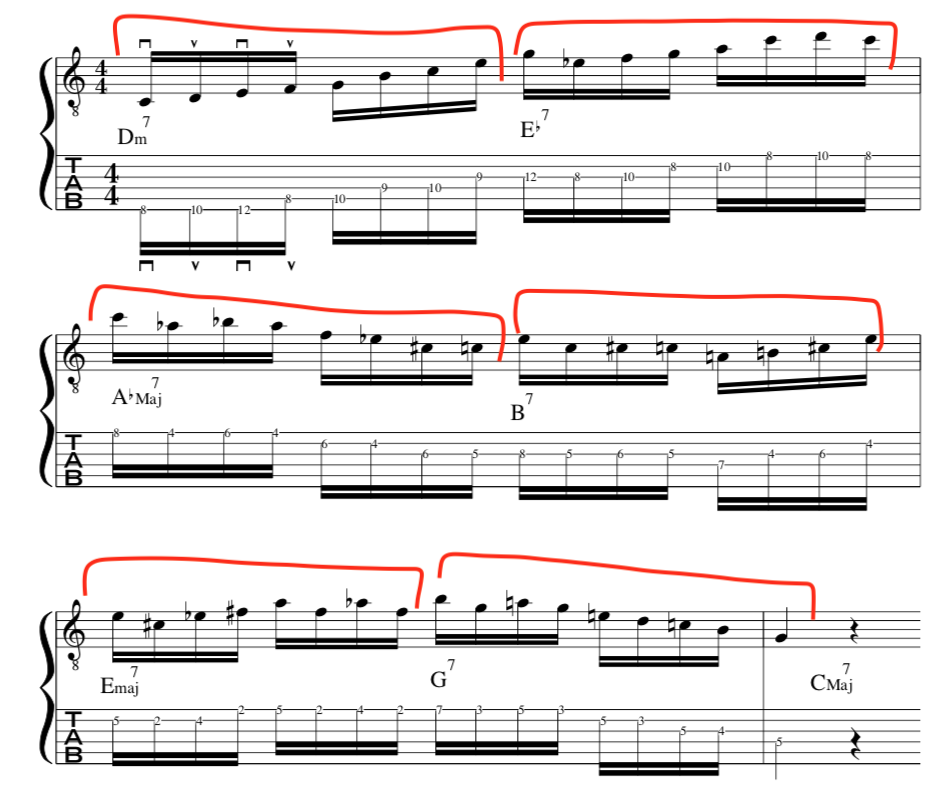
PLEASE WATCH VIDEO ABOVE FOR DETAILED ANALYSIS:
Hi Guys,
Today, one last look at “Intervallic string skipping” for a contrapuntal-esque picking style.
The first thing to do is take one position on the guitar fingerboard and find the “Harmony” embedded within that position.
I have taken the A Major position [F#m Relative]

Now, let’s make an A Major basic arpeggio from the 1st string and the 6th string.
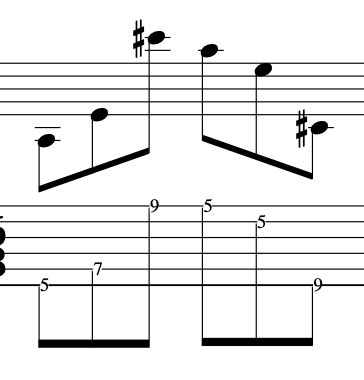
Straight away, you will notice that the notes on the 1st string and the notes on 6th string are the same but in different octaves. This gives us an easy and excellent way to exploit the High to Low or Low to High counterpoint effect.
Now let’s do the same with a piece of scale: [Starting on an “Upstroke”]
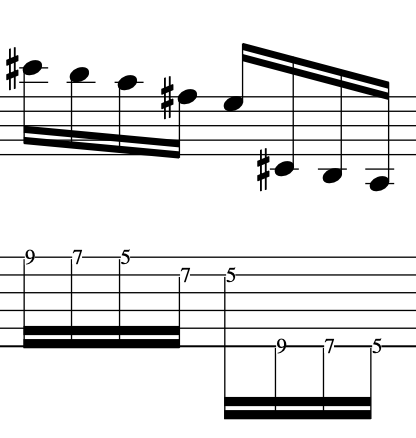
Again, the octave makes this flow and connect easily from the low to high.
The next point is to take a chord sequence and use this “String skipping/intervallic” effect: Here we have Vi ii V7 I

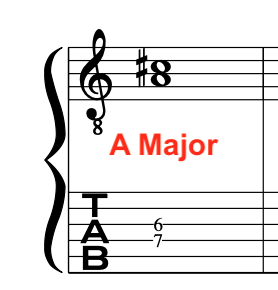
HARMONY
Th next essential point is to acknowledge the harmony in this position:
We will do this by exploiting the Cycle of 4ths in this simple 5 fret position.
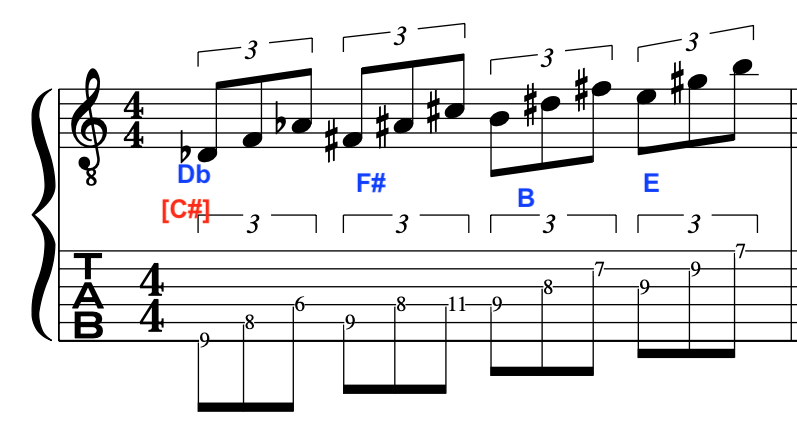
Here you can see that we have a huge amount of harmony available to us right under our fingertips. These chords don’t have to be Major, they can be minor, diminished, augmented etc. This gives us even more material to work with.
If we move down a fret [Semitone] then we have another set of harmony in 4ths awaiting us.
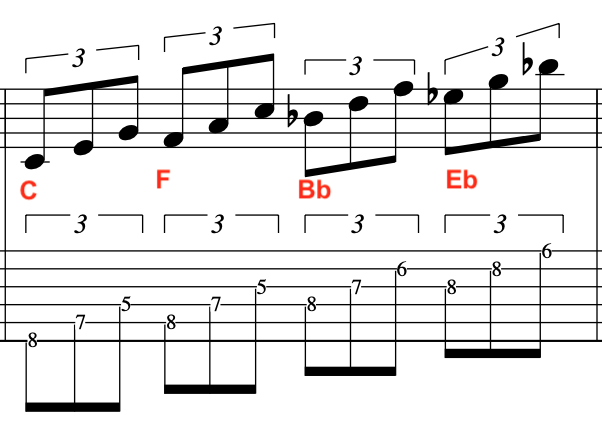
Along, with this we have chord inversions and all of the inversions of A Major:
So, as you can see there is a huge amount of harmony right in front of us even in this one position that we can exploit and create lots of music from.
Lastly, let’s create another “String skipping intervallic” example:
I’m going to create a phrase outlining a D Maj#11 chord.
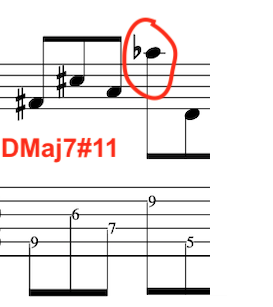
To make this sequence quite quick I am going to add some scale from high to low:
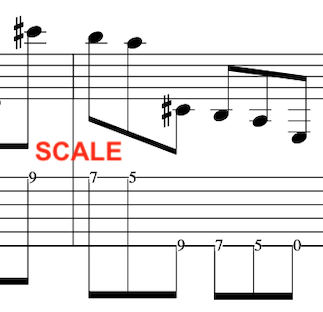
Now we will add a V -I cadence
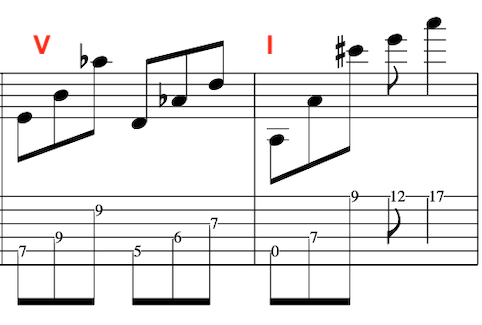
Now, let’s view the whole line:

PDF DOWNLOAD:
PDF DOWNLOAD 2:
IF THIS LESSON WAS OF USE TO YOU THEN PLEASE SUBSCRIBE TO US BELOW ON YOUTUBE, THANKS!

